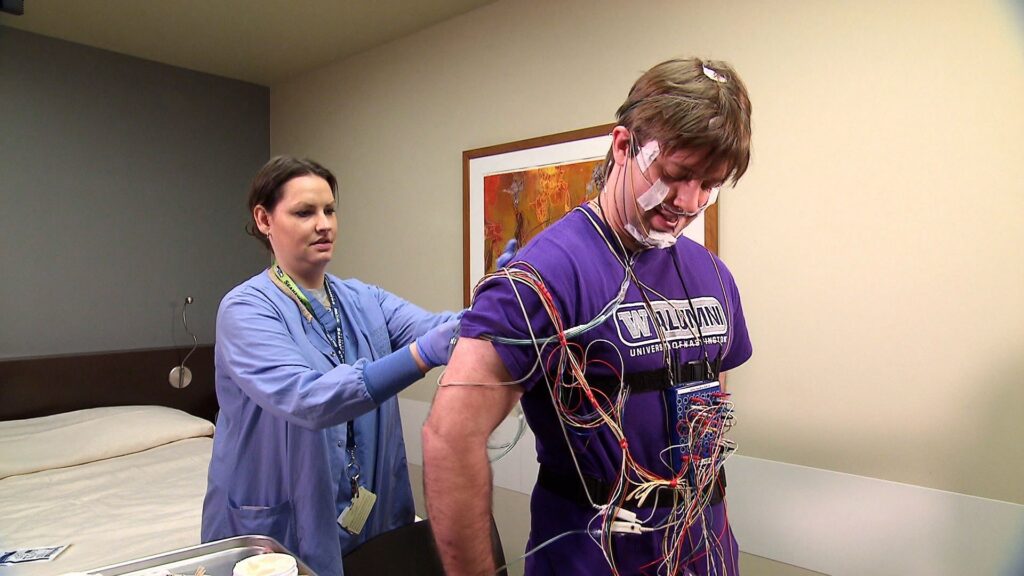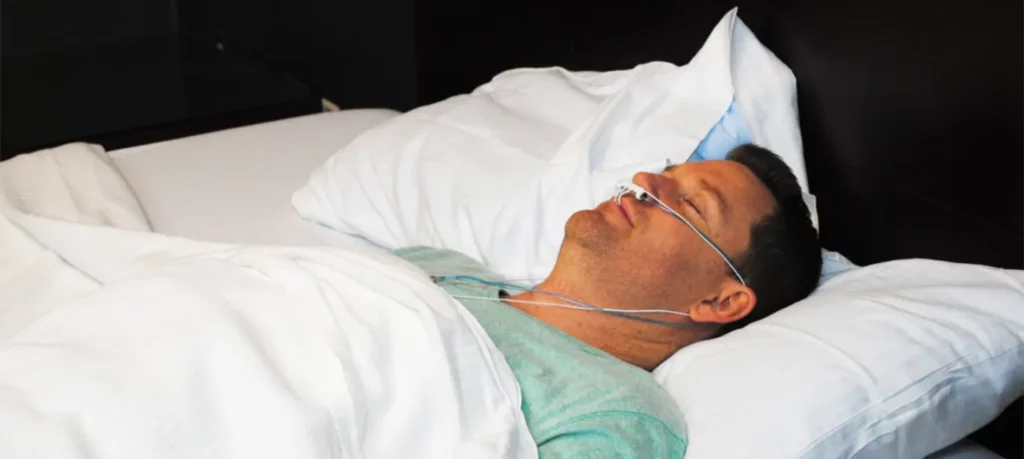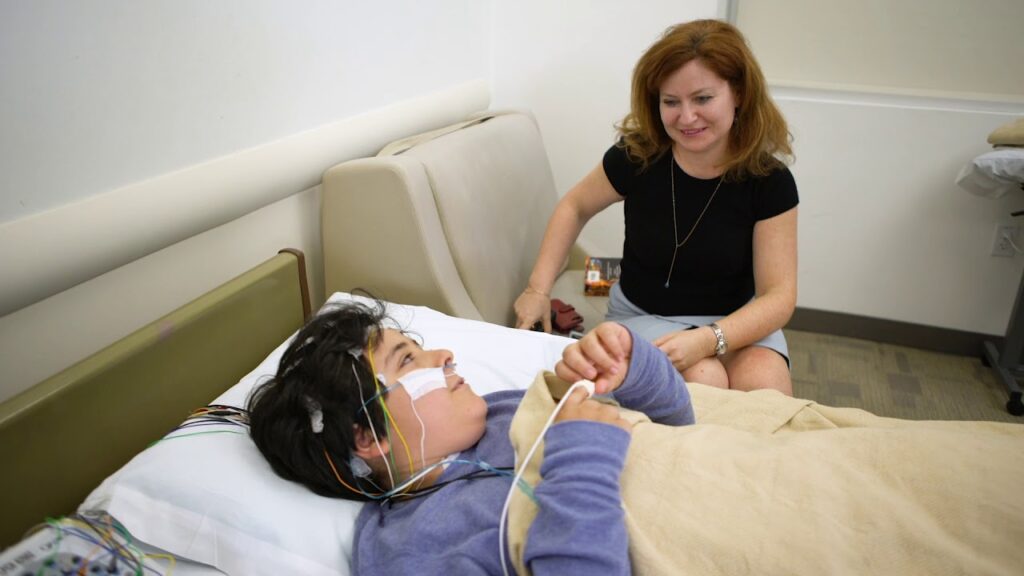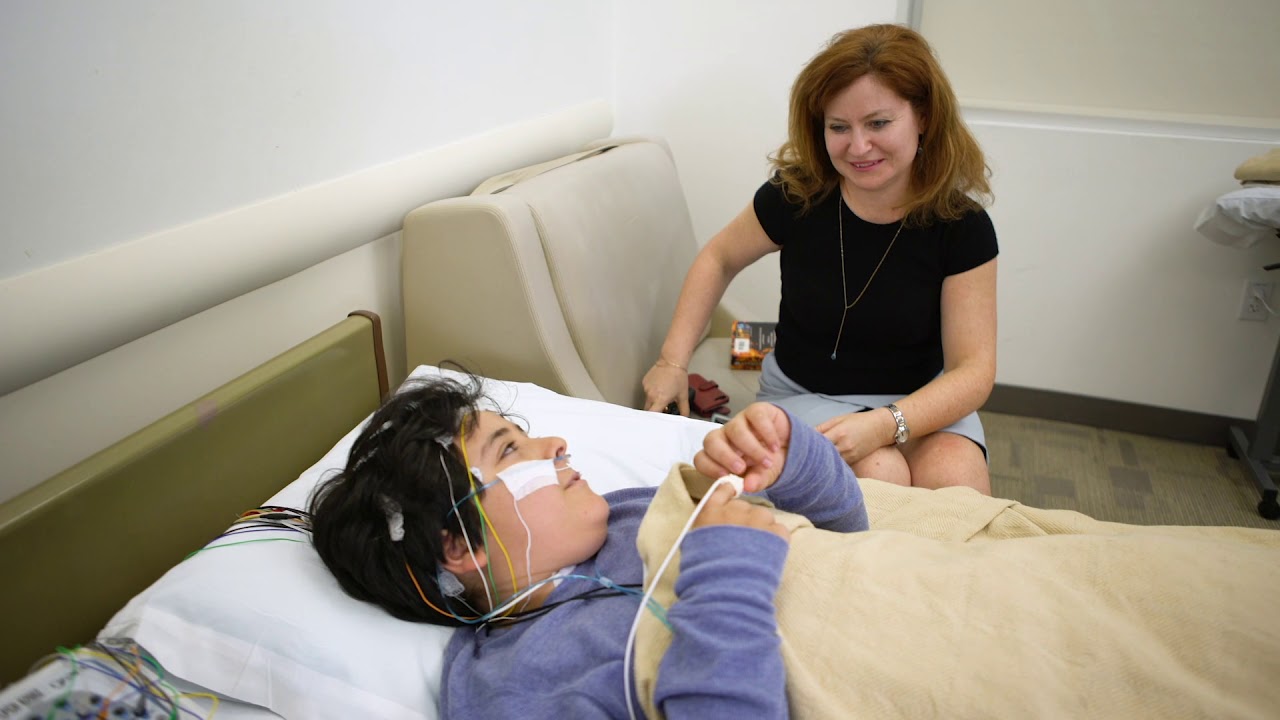Are you struggling with sleep? Do you often wake up feeling tired and unrested? If so, a sleep study test may be just what you need. In this article, we will explore the importance of sleep study tests, the process involved, how to interpret the results, and answer some common questions you may have. So, let’s dive right in!
The Importance of Sleep Study Tests
Sleep study tests play a crucial role in diagnosing and treating sleep disorders. Many people underestimate the impact of sleep on their overall health and well-being. However, inadequate sleep can lead to a range of issues, including daytime sleepiness, difficulty concentrating, and even an increased risk of accidents.
By undergoing a sleep study test, you can gain valuable insights into your sleep patterns and identify any underlying sleep disorders that may be disrupting your rest. This knowledge is key to improving your sleep quality and overall quality of life.
Identifying Sleep Disorders
A sleep study test can help healthcare professionals identify various sleep disorders, such as sleep apnea, insomnia, narcolepsy, and restless leg syndrome. These disorders can significantly impact your ability to get a good night’s sleep and can have long-term health consequences if left untreated.
By undergoing a sleep study test, your healthcare provider can monitor your brain activity, breathing patterns, heart rate, and other key metrics to determine the presence and severity of any sleep disorders. This information is crucial in developing an effective treatment plan tailored to your needs.
Improving Sleep Quality
Even if you don’t have a diagnosed sleep disorder, a sleep study test can still be beneficial. It can provide valuable insights into your sleep habits and help identify any factors that may be negatively impacting your sleep quality.
During the test, you will be monitored for factors such as snoring, body movements, and the number of times you wake up during the night. This information can help pinpoint potential problems and guide lifestyle modifications or interventions to improve your sleep quality.
Furthermore, a sleep study test can also shed light on the impact of external factors on your sleep. For example, it can reveal if your sleep is affected by noise pollution, temperature fluctuations, or uncomfortable bedding. Armed with this knowledge, you can make informed decisions to create a sleep-friendly environment that promotes optimal rest.
Additionally, a sleep study test can uncover the connection between your sleep patterns and your overall health. Research has shown that poor sleep quality is linked to an increased risk of developing chronic conditions such as obesity, diabetes, and cardiovascular disease. By understanding how your sleep patterns contribute to your overall health, you can take proactive steps to protect yourself from these potential health risks.
The Process of a Sleep Study Test
Now that we understand the importance of sleep study tests, let’s take a closer look at what you can expect during the process.
Preparing for the Test
Prior to the sleep study test, your healthcare provider will provide you with specific instructions to follow. This may include avoiding certain substances, such as caffeine and nicotine, before the test. You will also typically be asked to arrive at the sleep center in the evening to allow enough time for the necessary monitoring.
It’s essential to follow these instructions carefully to ensure accurate results. If you have any questions or concerns, don’t hesitate to reach out to your healthcare provider for clarification.
When preparing for the test, it’s important to remember that a sleep study is a valuable tool in diagnosing sleep disorders. By following the instructions provided, you are helping to ensure that the results of your test are as accurate as possible. This will enable your healthcare provider to make informed decisions regarding your treatment plan, ultimately improving your sleep quality and overall well-being.

What Happens During the Test
Once you arrive at the sleep center, you will be shown to your private room, which is designed to resemble a comfortable hotel room rather than a medical setting. You will have access to a private bathroom and a bed equipped with monitoring devices.
The monitoring devices will record various aspects of your sleep, such as brain activity, eye movements, muscle tone, heart rate, and breathing patterns. The process is painless and non-invasive, allowing you to sleep as naturally as possible.
During the night, a sleep technician will be monitoring your sleep from a separate room. They will be able to observe your sleep patterns and make adjustments to the equipment if necessary. If you need to use the bathroom during the test, the technician can quickly detach the monitoring devices.
It’s worth noting that the sleep center is designed to provide a calm and relaxing environment, promoting a restful night’s sleep. The room is carefully soundproofed to minimize any external noises that could disrupt your sleep. The bed is fitted with high-quality linens and pillows to ensure your comfort throughout the night. Additionally, the lighting in the room can be adjusted to your preference, allowing you to create the perfect ambiance for a peaceful slumber.
Furthermore, the sleep technician monitoring your test is highly trained and experienced in sleep medicine. They are skilled in analyzing sleep patterns and identifying any abnormalities that may indicate a sleep disorder. Their expertise ensures that your test is conducted with the utmost professionalism and accuracy.
Interpreting Sleep Study Results
Now that you’ve completed the sleep study test, you may wonder what happens next. The next step involves interpreting the results to gain a deeper understanding of your sleep patterns and potential sleep disorders.
Understanding your sleep study results involves delving into the intricacies of your sleep architecture. This includes examining the duration and distribution of different sleep stages throughout the night. Each sleep cycle is composed of various stages, such as light sleep, deep sleep, and REM sleep, each playing a crucial role in the restorative process of sleep.
By closely analyzing the composition of these stages and cycles, healthcare professionals can evaluate the quality of your sleep and pinpoint any irregularities that may be affecting your rest. This comprehensive insight is vital for formulating an accurate diagnosis and tailoring a personalized treatment plan to address your specific sleep needs.
Understanding Sleep Cycles and Stages
A sleep study test provides valuable information about your sleep architecture, including the duration and distribution of different sleep stages throughout the night. Sleep comprises several cycles, each consisting of different stages, including light sleep, deep sleep, and REM sleep.
By analyzing the various stages and cycles, healthcare professionals can assess the quality of your sleep and identify any abnormalities that may be present. This insight is essential for developing an accurate diagnosis and treatment plan.
Delving deeper into the results, healthcare providers can also uncover abnormal patterns that may manifest during your sleep. These patterns could include frequent awakenings, breathing interruptions, or leg movements, all of which can offer valuable clues pointing towards specific sleep disorders like sleep apnea or restless leg syndrome.

Recognizing Abnormal Patterns
In addition to sleep architecture, sleep study results can also reveal other abnormal patterns, such as frequent awakenings, breathing interruptions, and leg movements. These patterns can help identify specific sleep disorders like sleep apnea or restless leg syndrome.
Your healthcare provider will carefully analyze the sleep study results and discuss their findings with you. They will explain any abnormalities detected and their potential implications for your overall sleep health.
Common Questions about Sleep Study Tests
As you embark on your sleep study journey, you may have some questions and concerns. Let’s address a few common queries to help ease any apprehensions you may have.
Understanding the intricacies of sleep study tests can help alleviate any uncertainties you may have. From the moment you arrive at the sleep center to the final analysis of your results, each step is carefully designed to ensure a thorough evaluation of your sleep patterns and potential disorders.
Risks and Side Effects
One common concern is whether there are any risks or side effects associated with sleep study tests. The procedure itself is generally safe and non-invasive, with minimal risks involved.
It’s essential to note that the monitoring devices used during a sleep study are meticulously calibrated to minimize any discomfort or adverse reactions. In rare cases, individuals may experience slight discomfort or difficulty falling asleep due to the unfamiliar environment, but these instances are infrequent and typically do not impact the overall quality of the results.
Occasionally, some individuals may experience mild skin irritation from the monitoring devices. However, these side effects are usually temporary and can be easily managed with appropriate care and treatment.
Home vs. Lab Sleep Studies
Another question often raised is whether a sleep study can be done at home instead of a sleep lab. Home sleep studies are an alternative option for individuals who may find it difficult to sleep in a lab environment or have a suspected sleep disorder of a less complex nature.
While home sleep studies can provide valuable information, they may not be as comprehensive as a sleep study conducted in a lab setting. The controlled environment of a sleep lab allows for more precise monitoring and evaluation of various sleep stages and physiological parameters, leading to a more detailed analysis of your sleep patterns.
Your healthcare provider will determine which option is most suitable for your specific needs, taking into account the complexity of your sleep issues and the level of monitoring required for an accurate diagnosis.

Next Steps After a Sleep Study Test
After completing a sleep study test, the next step is to develop a treatment plan based on the findings and recommendations from your healthcare provider.
Treatment Options for Sleep Disorders
If a sleep disorder is identified, various treatment options may be considered. These can include lifestyle changes, such as establishing a regular sleep routine and optimizing sleep environment, as well as the use of medical devices or medications, depending on the specific diagnosis.
Your healthcare provider will work closely with you to create an individualized treatment plan that addresses your unique needs and preferences.
Lifestyle Changes for Better Sleep
Even if no sleep disorder is identified, making lifestyle changes to improve sleep quality is always beneficial. These changes may include avoiding stimulating activities close to bedtime, limiting caffeine intake, practicing relaxation techniques, and creating a comfortable sleep environment.
Your healthcare provider can provide guidance on implementing these changes and support you throughout your journey to better sleep.
Conclusion
In conclusion, undergoing a sleep study test is a crucial step in understanding and improving your sleep quality. By identifying sleep disorders, interpreting the results, and exploring treatment options, you can take control of your sleep health and optimize your well-being. So, if you are experiencing sleep-related concerns, don’t hesitate to discuss the possibility of a sleep study test with your healthcare provider. It may be the key to unlocking better sleep and a better life.
Related: Home Sleep Test Australia and Convenient Solutions for Sleep Disorders

